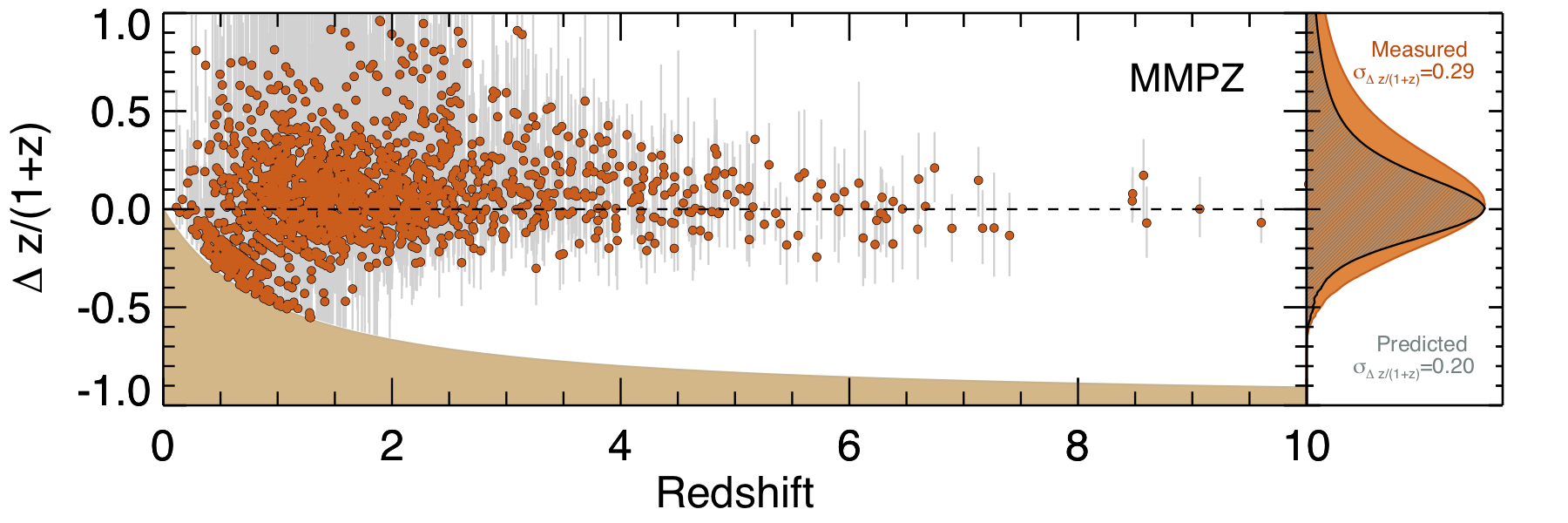MMpz: The millimeter photometric redshift tool

The MMPZ tool is designed to provide a far-infrared/millimeter photometric redshift for dusty galaxies which lack good redshift constraints. Galaxies without spectroscopic redshifts or good optical/near-infrared photometric redshifts suffer from highly uncertain redshift constraints, due to the strong degeneracy of millimeter flux densities and colors with redshift. The MMPZ tool is designed to interpret all available flux density constraints in the FIR/mm regime of a galaxy's spectrum (rest-frame ~5um-3mm) and infer the best possible redshift constriants. It takes into account: (a) the intrinsic breadth in galaxies' rest-frame SEDs (reflecting a variety of dust temperatures) and (b) uses galaxies flux densities, in addition to their FIR/mm colors, to determine the best underlying redshift constraints; the latter is done by understanding galaxies' distributions in the IR luminosity--rest-frame peak wavelength plane (hotter galaxies are brighter). For example, between two galaxies with the exact same FIR/mm colors but one at fainter flux densities and one with brighter flux densities, MMPZ will guess the redshift probability density distribution of the brighter source skews toward higher redshifts than the fainter source. This is because brighter sources are likely to be hotter, and with the same observed peak wavelength, hotter galaxies will sit at higher redshifts.
Read more about the MMPZ algorithm in the accompanying paper, Casey (2020, submitted).
Download MMPZ idl package here: mmpz_package.tar
(Instructions and example given therein)
(If you want a version in python, well, ask me ...later)